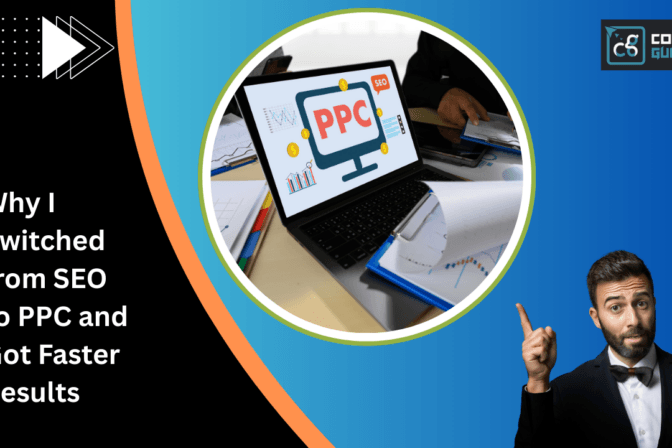Developing a multi-vendor ecommerce website similar to Amazon in 2023 can be a costly endeavor. Depending on the features you want to include, the complexity of the platform, and the number of vendors and products, the cost can range anywhere from tens of thousands of dollars to hundreds of thousands of dollars.
The first step in determining the cost of your multi-vendor ecommerce website is to decide what features you want to include. Do you want to include a marketplace for buyers and sellers to interact? Do you want to offer payment processing services? Do you want to integrate with existing third-party systems? All of these features will add to the cost of the platform.
The second step is to consider the complexity of the platform. Is the platform going to be simple or complex? Will you need to include a lot of custom coding? Will you need to develop a complex user interface? These factors will also add to the cost of the platform.
Finally, you need to consider the number of vendors and products that will be included in the platform. If you plan to have hundreds of vendors and thousands of products, the cost will be much higher than if you plan to have a handful of vendors and just a few products.
Overall, the cost of developing a multi-vendor ecommerce website similar to Amazon in 2023 can vary greatly depending on the features, complexity, and scope of the project. It is best to speak with an experienced web developer to get an accurate estimate of the cost for your project.
Understanding the Complexity of a Multi-Vendor Ecommerce Website
In the world of ecommerce, multi-vendor websites are taking off. This type of website allows multiple vendors to have their own pages within a single website, allowing customers to purchase from multiple vendors on the same website. This type of website is becoming increasingly popular with businesses that want to offer a wider variety of products and services to their customers.
However, these websites come with a unique set of challenges. From managing vendor relationships to handling payments and shipping, multi-vendor websites are complex and require a lot of effort to maintain.
1. Establishing the Necessary Infrastructure: Any successful multi-vendor e-commerce website must have the necessary infrastructure to support the multiple vendors and customers. This includes reliable servers, secure payment gateways, a customer service platform, and a content management system.
2. Setting Up the Vendor Platform: A multi-vendor e-commerce website will require a platform to host the vendors. This platform should have features that allow vendors to manage their products, upload content, and track customer purchases.
3. Developing the User Interface: The user interface of a multi-vendor e-commerce website must be easy to use and understand. It should have a simple navigation system, and the checkout process should be streamlined.
4. Creating a Secure Payment System: A secure payment system is essential for any e-commerce website. This should include a system that allows customers to pay using credit cards, PayPal, or other payment methods.
5. Establishing an Inventory Management System: An inventory management system is necessary for a multi-vendor e-commerce website. This system should be able to track products and keep track of inventory levels for each vendor.
6. Developing a Marketing Strategy: To be successful, a multi-vendor e-commerce website must have a comprehensive marketing plan. This includes utilizing search engine optimization (SEO) and other online marketing strategies.
7. Analyzing Data: The data generated from a multi-vendor e-commerce website must be analyzed in order to identify trends and determine where improvements can be made. This can be done with the help of analytics tools.
8. Setting Up Customer Support: A multi-vendor e-commerce website must have customer support in order to provide assistance to customers with questions or problems. This can include a customer service phone number, email address, and live chat.
9. Maintaining the Website: The website must be regularly maintained and updated to ensure it remains secure and up-to-date. This includes making sure the software and plugins are up-to-date, checking for any security threats, and updating content.
Understanding the complexity of a multi-vendor e-commerce website is essential for any business looking to launch a successful online store. By establishing the necessary infrastructure, setting up the vendor platform, developing the user interface, creating a secure payment system, establishing an inventory management system, developing a marketing strategy, analyzing data, setting up customer support, and maintaining the website, businesses can ensure their multi-vendor e-commerce website is successful.
In conclusion, multi-vendor websites are complex and require a great deal of effort to maintain. They require strong relationships between the vendors, a secure payment system, a reliable shipping system, and a user-friendly website. The cost of developing a multi-vendor ecommerce website similar to Amazon in 2023 will depend on the complexity of the website and the features and functionality that are included, but it could cost anywhere from $50,000 to $200,000.
The Cost of Infrastructure and Technical Infrastructure
The first step in creating a multi-vendor ecommerce website is to build the infrastructure and technical components needed for the platform. This includes the website’s hosting plan, domain name, SSL certificate, database, programming language, and other technical components. Depending on the complexity of the project, the cost of the infrastructure can range from a few hundred dollars to several thousand dollars.
Payment Processing Systems and Security
The second step is to integrate a secure payment processing system into the website. This will require an integration of a payment gateway, payment processor, and fraud protection system. Depending on the payment processor used, these services can range from a few hundred dollars to several thousand dollars.
User Experience Design for a Multi-Vendor Platform
In addition to the technical aspects of the website, the user experience needs to be considered as well. This includes designing the website’s layout, navigation, and product search capabilities. Designing the user experience can range from a few hundred dollars to several thousand dollars.
Creating a Unique Brand Identity for a Multi-Vendor Website
Creating a unique brand identity for the website is an important part of the development process. This includes designing a logo, creating a website style guide, and developing a brand voice. This step can range from a few hundred dollars to several thousand dollars.
Search Engine Optimization (SEO) and Search Engine Marketing (SEM)
Search engine optimization and search engine marketing are essential for any website. This involves optimizing the website’s content, images, and videos for relevant keywords and phrases. It also involves creating and managing paid campaigns on search engines like Google and Bing. Depending on the complexity of the project, this step can range from a few hundred dollars to several thousand dollars.
Integrating Third Party Applications and Services
Depending on the features and functionality of the website, integrating third-party applications and services may be necessary. This includes integrating third-party shipping services, accounting software, customer relationship management software, and more. The cost of integrating these services can range from a few hundred dollars to several thousand dollars.
Quality Assurance Testing and Launch
Before the website can be launched, it must be tested to ensure that it is functioning properly. This includes testing the website’s performance, security, and compatibility with different browsers and devices. Depending on the scope of the project, this step can range from a few hundred dollars to several thousand dollars.
Maintenance and Support to Ensure Smooth Operation
Once the website is launched, it must be maintained and supported in order to ensure smooth operation. This includes implementing security measures, monitoring the website’s performance, and responding to customer inquiries and feedback. Depending on the complexity of the project, this step can range from a few hundred dollars to several thousand dollars.
Ongoing Marketing and Advertising Strategies
After launching the website, it is important to create and execute an ongoing marketing and advertising strategy. This includes developing content, running paid campaigns, and optimizing the website for search engine visibility. The cost of this step can range from a few hundred dollars to several thousand dollars.
Creating and Managing Social Media Profiles
Creating and managing social media profiles is another important part of the website’s marketing strategy. This includes creating accounts on platforms like Facebook, Twitter, and Instagram and managing them on a regular basis. Depending on the complexity of the project, this step can range from a few hundred dollars to several thousand dollars.
Strategies for Customer Retention and Acquisition
Developing strategies for customer retention and acquisition is essential for any ecommerce website. This includes creating loyalty programs, customer surveys, and email campaigns. This step can range from a few hundred dollars to several thousand dollars.
Creating and Promoting Featured Deals and Offers
Creating and promoting featured deals and offers is an important part of customer acquisition. This includes developing promotional campaigns, creating coupons and discounts, and optimizing the website for better visibility. The cost of this step can range from a few hundred dollars to several thousand dollars.
Utilizing Data Analytics Platforms for Insights
Utilizing data analytics platforms can help the website owner gain insights into their customers and their buying behavior. This includes integrating analytics services, creating dashboards, and generating reports. Depending on the complexity of the project, this step can range from a few hundred dollars to several thousand dollars.
Securing a Multi-Vendor Ecommerce Website
Securing a multi-vendor ecommerce website is an important part of the development process. This includes implementing security measures such as encrypting data, setting up firewalls, and monitoring activities on the website. Depending on the complexity of the project, this step can range from a few hundred dollars to several thousand dollars.
Suggested reading: Webflow vs WordPress: Which Should You Choose for Your Website in 2023?
In conclusion, the cost of developing a multi-vendor ecommerce website similar to Amazon in 2023 will depend on the complexity of the website and the services used. It is estimated that the cost of such websites could range from $20,000 to $100,000. This cost includes the cost of development, hosting, maintenance and support. Furthermore, the cost of developing a multi-vendor ecommerce website also depends on the features, complexity and scalability of the website. Therefore, it is important to consider the right technology stack and services before estimating the cost of developing a multi-vendor ecommerce website.
Are you looking to create an ecommerce website like Amazon? Then look no further! Our expert developers have the skills and expertise to make it happen. Visit our website right away to know more about how we can help you. Don’t wait any longer and take the first step to get your business online today!
All Our Post
- How Much Does Website Redesign Cost In 2023 – An Overview
- Uncovering The Price Tag Of Developing A Website In Laravel In 2023
- Top 3 Web Technologies For ECommerce Website Development!
- Estimating The Cost Of Developing An Ecommerce Website In WordPress
- How Much Does Website Development Cost In WordPress On An Hourly Basis?
- How Much Does It Cost To Develop A Professional WordPress Website In 2023?
- How Much Does It Cost To Develop Simple 10 Page WordPress Website In 2023
- Estimating The Cost Of Developing A Custom WordPress Website In 2023
- Uncovering The Price Tag Of Developing A Website In Laravel In 2023

I am Ashutosh – a seasoned digital marketer, bringing digital transformation to businesses, complementing businesses’ growth via generating qualified leads, drive site inbound traffic via organic and inorganic approach, & build their brands through useful, well-designed marketing strategies and Marketing Automation implementation via Chat GPT, HubSpot & Zoho.
- By admin











